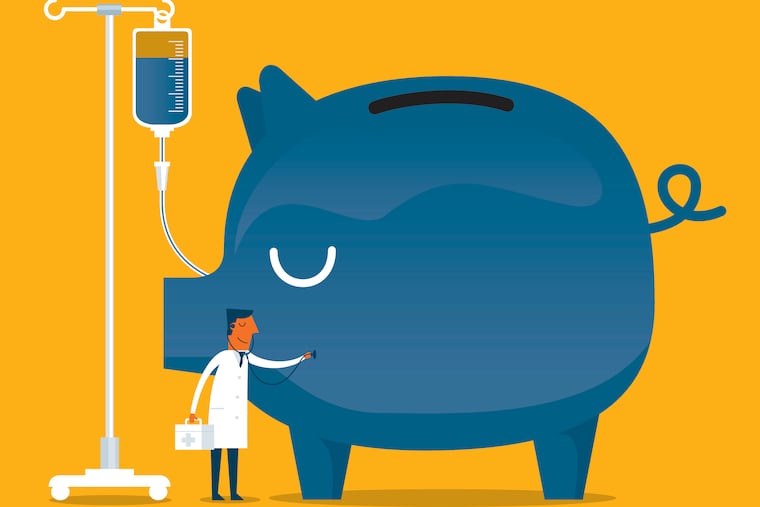Millions more Americans have medical debt than student debt. Where’s their relief?
Medical debt is pervasive in the U.S., totaling more than $200 billion and impacting millions. So why don’t we ever talk about it?

After President Joe Biden’s initial plan for student debt was struck down by the Supreme Court earlier this month, his administration announced a work-around to provide $39 billion for 804,000 Americans with such debt. Republicans argue this fix is unfair while some Democrats complain it’s not enough. What neither party ever discusses is another debt millions of Americans have, that’s a leading cause of bankruptcy and that disproportionately impacts women, Black people, the working poor, and LGBTQ people: medical debt.
It’s unfathomable that following a multiyear pandemic that killed more than a million Americans and left millions more with long-term disability (long COVID), the issue of medical debt wouldn’t be a major topic of discourse, especially among politicians running in 2024. It is not.
» READ MORE: People with long COVID shouldn’t have to fight for disability benefits
Why not?
Medical debt is pervasive: 1 in 10 U.S. adults — around 23 million people — have medical debts greater than $250. Of those, 11 million owe more than $2,000, and 3 million owe more than $10,000.
People with student loan debt chose it. But no one chooses medical debt.
In 2015, I had a pulmonary embolism — a surprisingly common yet life-threatening health crisis that kills as many as 30% of those who get one. I was in the intensive care unit for nearly three weeks. I had no surgical procedures and no special treatment — I was just being monitored much of that time. My bill at the end of the 19-day hospitalization was a little over $260,000, of which my health insurance, like most comprehensive plans, paid 80%. But I was still responsible for 20% — or $52,000. Money I didn’t have.
My wife was diagnosed with a rare, aggressive cancer in May 2022. Over six months, she had five surgeries and a dozen invasive procedures. She had three days of chemotherapy every other week. Each round of chemo cost just under $16,000. She also had insurance, but it didn’t cover everything, so before each treatment and scan, I had to make a payment: $3,400 before the hospital would give my wife a chemo treatment to try to save her life.
Cancer is expensive and because it is so pervasive, it’s emblematic of how people accrue medical debt. With 40% of people developing cancer in their lifetime in the U.S., that’s a lot of medical debt waiting to happen.
Cancer is expensive.
Medical debt also impacts certain populations more. Almost half of women say they have medical debt, versus about a third of men (48% vs. 34%). Black Americans are also more likely to have medical debt (56%) than white Americans (37%).
LGBTQ people also have higher rates of medical debt; 30% say they had trouble paying medical bills in the last 12 months, compared to 19% of non-LGBTQ people.
What’s more, ironically, medical debt makes you sick. A 2022 study from the Journal of the American Medical Association found that people with medical debt were more likely to have trouble affording housing and food — both of which can have significant impact on health.
President Biden’s son Beau died of an aggressive brain cancer in 2015. Sen. Bob Casey had prostate cancer earlier this year. Several House members have been battling cancer publicly, like Rep. Jamie Raskin (D., Md.). And Sen. John Fetterman, who had a sudden stroke and subsequent severe depression, spent months in the hospital — something few Americans could do without going bankrupt.
Everyone is on the student loan debt bandwagon, but medical debt has no advocates seeking a work-around for millions of struggling Americans — not even politicians who have faced serious health crises themselves.
My wife died suddenly in November, even as the treatment was working for her. I inherited her medical debt, as do many family members when a sick loved one dies. Whom do I or anyone facing this crushing debt turn to for help? It’s past time we get this conversation started. Millions of Americans are waiting.
Victoria A. Brownworth is a Philadelphia journalist and writer. Her coverage of the 2022 monkeypox outbreak won first place for series reporting from the National Newspaper Association earlier this month. She is also the 2023 recipient of the Sarah Petit Memorial Journalist of the Year Award from the NLGJA: The Association of LGBTQ+ Journalists.